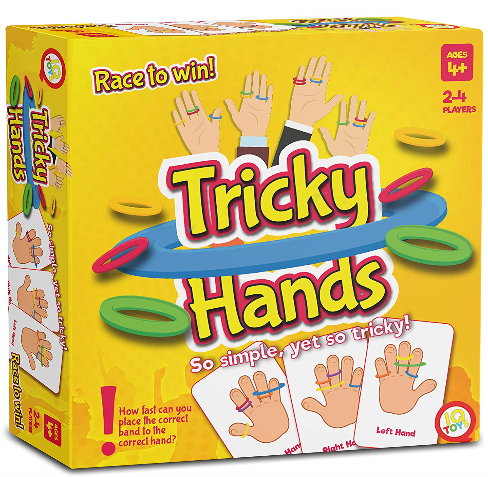 |
A bingo game that will make you think. |
JINGO is bingo, but a little more sophisticated than your ordinary call-a-number bingo. JINGO cards show pictures, but instead of calling for the picture to be covered you give clues as to what should be covered. Back to School JINGO playing cards have pictures of things that could be found in a school. Here is a sampling from the clues:
- Use me and you won't need to bend the pages to find your place (bookmark).
- I am called a pair even though you just need one of me (scissors).
- I have a foot but no leg (ruler).
- I am at school for you if you get hurt or sick (nurse).
All cards to this game are heavyweight paper. Laminating all cards right away would be a good idea. The JINGO card measures 8.5 x 11, it is a 5 x 5 grid, and there is a free space in the middle. The clue cards show the clue and the picture that should be covered on one side and the words Back To School JINGO on the other side. The clue cards come 10 on a sheet, are perforated, and will need to be cut or torn apart before playing. No chips or markers for covering are included.
I have blogged about three other JINGO games - Thanksgiving JINGO, Community JINGO and Money JINGO.
 |
A colorful playing card, clue cards with pictures, instruction page with examples of BINGO patterns. |
Object:
Be the first player to cover the squares on your card that match a predetermined design such as diagonal, horizontal, vertical, four corners, letter "T", border etc.
Set Up:
Give each player one JINGO playing card and 25-30 tokens to cover spaces. If you don't have bingo chips you could try dry beans, dry pasta, pennies, etc.
Play:
Give one clue at a time. Each player searches his card for the answer. Show the picture on the clue card after everyone is done covering, just in case someone covered the wrong thing - they can uncover it right away. Keep giving clues until someone has a JINGO (has covered all the squares needed to match the predetermined design).
To see other fall-themed games, click here.
- Hold several tokens in the hand, bringing them to the fingertips one at a time to cover the squares.
- When cleaning up, pick up the tokens one at a time and squirrel them in the palm without dropping. How many can you hold?
- Make a copy of the black and white card (comes with the game) which shows the different bingo patterns (horizontal, vertical, diagonal, four corners). Cut them out and display the one you are using for each game for all to see.
- Let anyone in the group answer the questions aloud as you read the cards. Once all answers have been given, let players play independently and see if they can remember the answers.
- For non-readers, turn the question over and let them see the picture. They can match the picture.
- Use letters as your patterns. You can play for O (border), X, N, L, P, C, E, F, G, H, I, S, T, U, Y and Z.
- Visualize the letter you are going for as a bingo and do not mark pictures that aren't part of the letter.
- Pick the pieces off the card after each game, squirreling them in the palm. How many can you hold without dropping any?
- Stop occasionally and check the player's card. Ask them to point out places where they only need one more to win a bingo. Or point out possible bingos and ask how many more will be needed to win or which squares will need markers to win in that direction etc.
- Work
on visual discrimination, visual closure, spatial relations, figure
ground, visual scanning, manual dexterity, in-hand manipulation, fine
motor control, socialization skills, executive functioning skills,
process skills, play and leisure exploration and participation
In the box: 30 JINGO cards, 46 clue cards
If you are interested in purchasing this item or just want more information, click on the image below.





